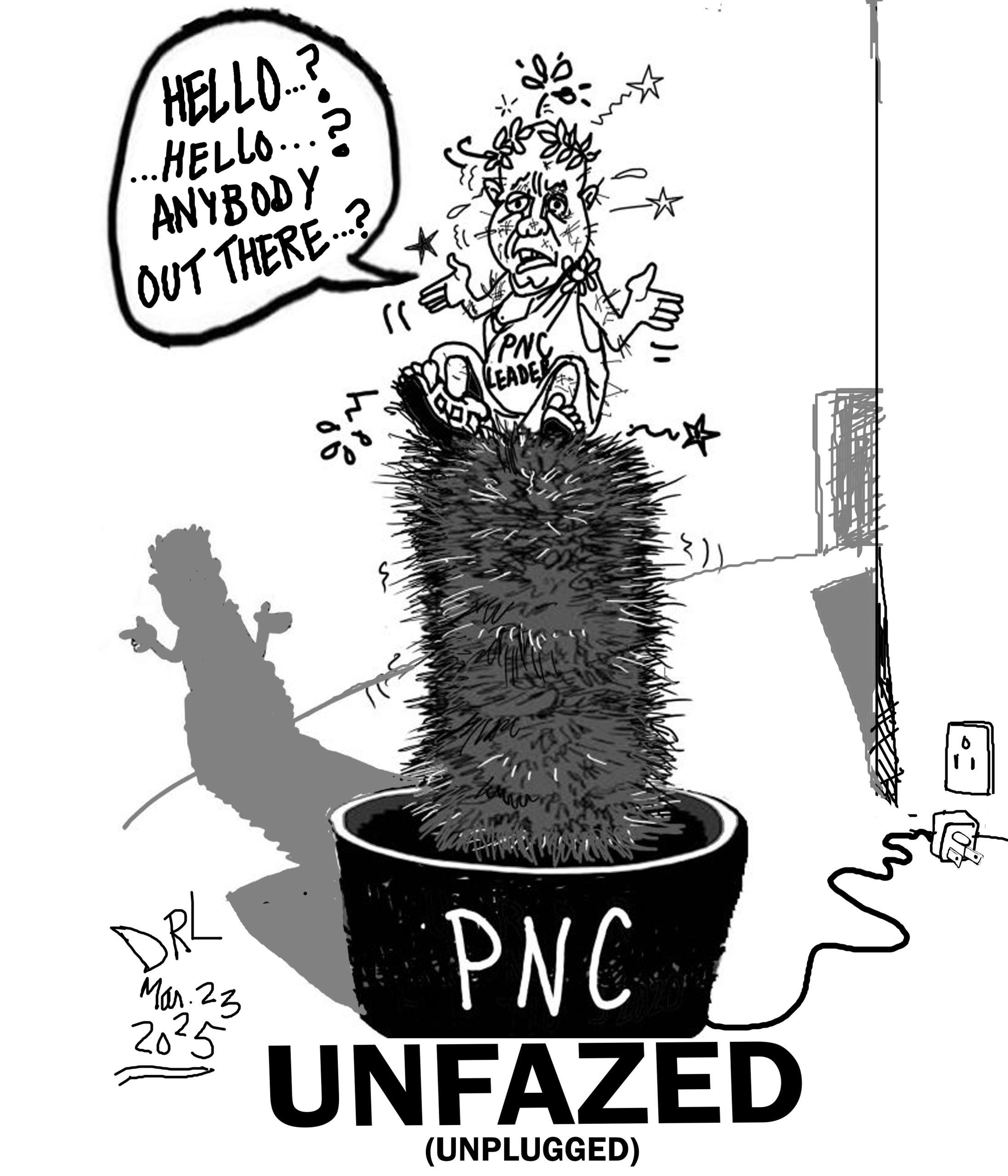Latest update March 30th, 2025 9:47 PM
Latest News
- Queen’s College defeats Jamaica in international debate competition
- AFC will accept 60-40 split for coalition with APNU
- Nation yet to see ExxonMobil’s US$7.3B final audit report four months after GRA instructed its release
- Govt suspends Mohamed’s security service licence
- ‘PPP hooliganism confirms they know their time is up’
Let’s ensure oil and gas work to all our benefit
Aug 23, 2021 Letters
Dear Editor,
In a letter in the Stabroek News, written by Ms. Janette Bulkan captioned “Proposed Gas to Shore Pipeline appears to be not viable” dated 21/08/04… She stated that the gas availability may be quantified as 50 million standard cubic foot per day (SCFPD). She concluded that the gas to shore pipeline project in question is not viable; it is premature and shortsighted. She supported her conclusion by arguing that Exxon is reinjecting 95 percent of the 50 mscfpd gas back into the wellheads under pressure to enhance well production.
As a lay person, I saw reason to put on paper as I understand the issue.
There is no question as to Guyana’s need for a resolution, which would be beneficial to Guyanese. One which addresses the efficacy of a power generating facility capable of producing low cost energy to everyone, while concurrently protecting the environment. There is no question that burning cleaner, cheaper fuel, providing more reliable electricity, addressing a present hazardous environmental problem, should be the focal point. At the same time, the population would benefit from cheap cooking gas.
There is no question that this project would enhance the quality of life of Guyanese by the provision of low-cost energy while simultaneously reducing the carbon footprint by the burning of cleaner fuel.
While arguments can be made that gas injection at associated well heads may be necessary to maintain a reservoir to extract more petroleum and that deviation may cause oil to eventually leaked out of the capped well, polluting the ocean, is there an alternative to the method stated by Ms. Bulkan. However, before I examine this, I would like to discuss the problem.
Guyana has Oil & Gas, lots of it. It’s here to stay for several decades. Let’s ensure it works to all our benefit. .
The Solution to providing sufficient Gas to sustain a Gas to Shore Facility can be a simple fix.
The life cycle of any oil well has 3 stages of hydrocarbon production, 1) Primary Oil recovery 2) Secondary Oil recovery 3) Enhanced Oil Recovery (EOR) .
EOR becomes essential when there is a decline in reservoir pressure and primary and secondary recovery methods are unable to sustain profitable production.
Another commonly used hydrocarbon recovery technique is Water Injection.
This technique is suitable for both onshore and offshore oil production and would resolve not only the Gas supply for the power generation but an inherent environmental issue that presently exists.
Water is produced in large volumes in Oil & Gas production better known as Produced Water. It is classified as a by-product or wastewater during the production process and contains several toxic substances such as Sulfates, Chlorides, Aluminum, and Sodium due to chemical introduced into the wellbore during production operation.
Production water is referred to as brine and is as much as 15 times saltier than sea water. It is potentially hazardous and impacts the environment and the marine ecosystem negatively. Substituting the gas injection methodology with the injection of produced water would ensure adequate gas for domestic consumption and even export eliminating the problem raised by Ms. Bulkan while at the same time mitigating the polluting effects of the produced water which is usually released into the ocean causing damage to the marine ecosystem.
Note produced water injection is used commonly in the US (volume 45%). The technology is presently available.
Ms. Bulkan suggested that instead of moving ahead with the gas to shore project, the country should invest in renewables. Hydro is renewable but has its own problematic and the time frame is futuristic. However, natural gas is here.
Solar is renewable but it is not 100% reliable. Arguing that Guyana is in the tropics, with the benefit of sunlight has merit but there is always heavy overcast, too many rainy days, panels are still inefficient, costly and to compound it all, there is only 5-6 hours of effective sunlight per day for power generating. It’s just not a simple fix.
Hydrogen is gaining substantially and may be the future.
Having said the above, it is my opinion that we should not rush through with the deal for US$900M. We need to reexamine the price so we are not shafted. In its study of infrastructure through 2035, the American Petroleum Institute estimated average U.S. pipeline costs of $178,000 per inch-mile for 2016 (in nominal dollars) for large gas transmission pipelines. Limited research indicates that the Norway gas pipeline price was about $3. 8M per mile and that was over 44 inches. The Langeled pipeline was 725 feet with about 239 ft under sea was about $3.5M and it was between 42 and 48 inches.
From what I gather, ours would be underwater for about 120 miles and some overland. With regard to the gas generating plant one was constructed in 2015, was over 6500 MW and cost about $812/KW. It is estimated that a new gas generating plant should produce electricity at about 7 cents per KWh. All the more reason to go this route.
Are we going to pay for our gas? Should Exxon not share in the cost as this would save them from having to flare? These and many more questions need some answers.
Yours truly,
Rajendra Bisessar
Share this:
- Click to print (Opens in new window)
- Click to email a link to a friend (Opens in new window)
- Click to share on Facebook (Opens in new window)
- Click to share on WhatsApp (Opens in new window)
- Click to share on Twitter (Opens in new window)
- Click to share on Pinterest (Opens in new window)
- Click to share on Pocket (Opens in new window)
- Click to share on Tumblr (Opens in new window)
- Click to share on Reddit (Opens in new window)
- Click to share on LinkedIn (Opens in new window)
Related
Similar Articles

The Glenn Lall Show|| March, 28th, 2025
Follow on Tik Tok @Glennlall
THE BLUNT OF THE DAY

Sports
Mar 30, 2025
Kaieteur Sports- The Petra Organisation Milo/Massy Boy’s Under-18 Football Championship is set to conclude its third-round stage today, marking the end of preliminary rounds of the 11th annual...Features/Columnists
The PPP is afraid
Peeping Tom… Kaieteur News- Bharrat Jagdeo, General Secretary of the People’s Progressive Party (PPP), stood before... more
The U.S. “Joining” the Commonwealth: an unreasonable expectation
By Sir Ronald Sanders Kaieteur News- Recent media stories have suggested that King Charles III could “invite” the United... more
Publisher’s Note
Freedom of speech is our core value at Kaieteur News. If the letter/e-mail you sent was not published, and you believe that its contents were not libellous, let us know, please contact us by phone or email.
Feel free to send us your comments and/or criticisms.
Contact: 624-6456; 225-8452; 225-8458; 225-8463; 225-8465; 225-8473 or 225-8491.
Or by Email: [email protected] / [email protected]
Weekend Cartoon











